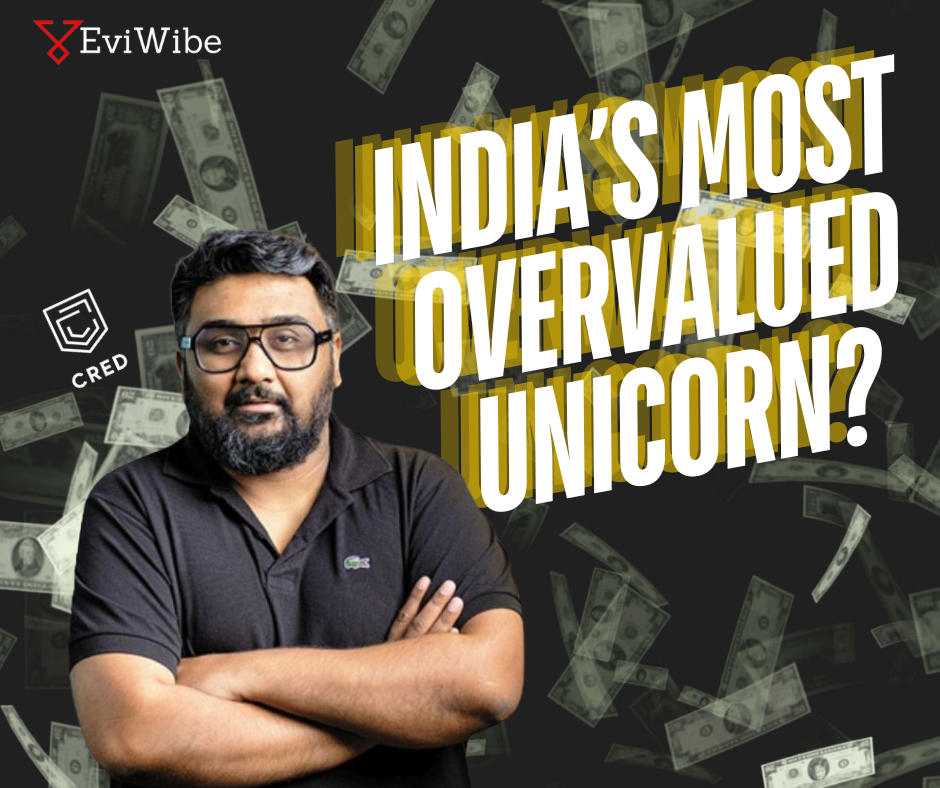CRED, a fast-growing Indian startup has rightly drawn a lot of admiration with its remarkable journey. Within just two years, CRED had a valuation of $2 billion. Placing it in the ranks of the fastest-growing Indian startups. The most impressive part of the CRED’s story is its financial profile. In 2020, CRED recorded a sizable loss of ₹360 crores, shocking the premium investors as an almost 492% jump from a loss of ₹61 crores in 2019. Every ₹1 CRED earns, it spends ₹727 showcasing impressive cash burn. Despite recording these large losses, CRED continues to raise money and fuel speculation about its strategy.
To appreciate how CRED functions, it is also worth noting that many major Indian startups such as Jio, Ola, and PharmEasy adopt a similar strategy by attempting to alter customer behaviour and habits. This ability to envision the new habitual way to use its products/services will pave the way to its business success.
Cash Burn – Identifying and Solving a Major Problem :
Companies such as CRED are first required to find a common problem and formulate a solution. Which is followed by an expensive fundraising and conversion period to generate users on the back of incredible deals or Jio’s style of disruption. Jio is one prime example; Jio found that a significant amount of Indians had very little access to internet data. They spent ₹1.5 lakh crores building infrastructure. At launch in 2016, Jio sold free SIM cards, free calls, and free data. Millions joined the Jio network by doing so, and within the first year the company made clear its intentions. Jio would grow its user population before generating any revenue, resulting in average losses of ₹31 crores in 2016, even while the company built a dedicated user-base.
The CRED team replicated Jio’s process at launch in 2018, solving three problems for credit card holder. Undisclosed fees, late fees from missed payments, and many credit card offers with out-of-pocket costs. CRED offered users rewards of flight tickets, credits, cash backs and discounts, stimulating on-time and early payments. The growth trajectory was intense and from 800,000 users in August of 2020, to 3 million users by August 2021 CRED was facilitating 20% of India’s premium credit card transactions. The only loss during this economic runway was significant, as CRED was concentrated on growing its users.
Habituation – Shifting Consumer behaviour:
Once companies attract a large number of users, the next step is to make their products. After getting users, companies then convert themselves into a necessity. This process is constructing new habits. For example, after Jio, customers needed almost two years to issue daily data and free calls. Just like the innovative solution that CRED found to pay bills of credit card statements generated dependence. No more there was a need to keep checking statements or an unpaid due amount. This convenience got people addicted. Thereafter, when they found the old, traditional, and time-consuming way everyone flipped to the newer savvy.
Cred becoming Necessity:
The next step in the journey is making the product or service something users can’t live without. Take Google Maps as an example. Many people today rely on it to navigate even in their cities. The app has made life so convenient that most of us no longer memorize routes or landmarks. Similarly, CRED aims to become irreplaceable for credit card users by managing their payments seamlessly.
Other startups like Ola and Jio have achieved this. Ola has changed how we book taxis, and Jio’s internet services have become so essential that the idea of life without data is hard to imagine. While CRED hasn’t fully reached this stage yet, its goal is to become a vital part of its users’ financial routines.
Cred turning Users into Profits:

The ultimate stage of any successful company is to be profitable, and CRED is well on its way there too. Once a company has a large user base and becomes an indispensable part of their daily lives, they start to make money. Jio, for instance, became profitable in just 1.5 years. In the Fiscal Year 2017, it had already earned ₹504 crores. By 2020, it made ₹5,562 crores which further proved that Jio’s user base consisted of the new internet users of the world. CRED too has the country’s top 1 percent of the highest earning population, signalling that CRED has the most lucrative user base as a target customer group for any business.
At the end of the day, the bottom 3 can be derived from offering premium financial services. Customer focus will help CRED become a big data firm providing credit, insurance services, and solutions to its users. Its white-labelled credit cards which are currently in the test marketing phase could be a very valuable proposition for banks wanting to vote with such plastic that doesn’t come cheap. It’s not hard to imagine CRED’s offers crunching data on user spending so they could also offer targeted advertising that would also work by gathering exclusive subscriber offers and earning commissions from the brands on the site or the app. CRED could also evolve into a bank itself. Its CRED Pay feature has the potential to become a direct lending solution for its elite users.
Cred as role model:
Initially speaking, CRED may look like a hypothetical company but you need to give it a bit of time and things will fall in place. It’s unfair to suggest that CRED is getting away with a great business model, with high indexes that don’t add up or do not have high scalability because that’s exactly what/who even the top startups in India are doing, and that was how they started. With every problem solved and an indispensable product, money will follow. While CRED has covered the necessities of a future profitable fintech with its Whitebox Intelligence buy, and by adding data, R&D, engineering, and building a customer service organisation, it will keep innovating new ways to becoming one of the most innovative fintech startups under our sunshine and tomorrow we all may have them as the platforms for our wealth too.
Cred is an finance giant, now lets know about E-Commerce giant meesho.
Just get know about smartphones which are under ₹15,000.



